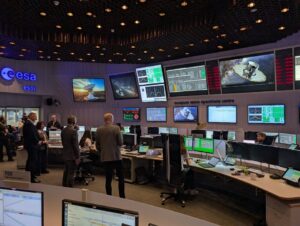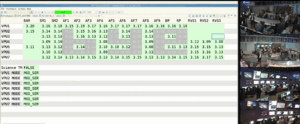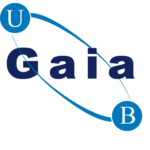Gaia spacecraft passivation
Gaia colleagues gathered at ESOC (Darmstadt) on the 27th of March to send the Gaia spacecraft off into its retirement. Xavi Luri, Carme Jordi, Claus Fabricius among others from Gaia Barcelona were at the celebration of the very successful Gaia spacecraft.
Gaia’s orbit around Lagrange point L2 can no longer be maintained without propellant, hence Gaia was moved into a heliocentric orbit, away from other spacecraft observing the Universe from L2 and avoiding close proximity to Earth. After Gaia’s insertion into its final orbit, the spacecraft was successfully passivated. Passivating a spacecraft means that the payload, payload module, service module and transmitters are all switched off. Gaia was designed to be resilient and may try to reboot itself after being switched off. With the passivation such a reboot was prevented.

The spacecraft passivation marks the official retirement for the Gaia spacecraft. The Gaia Data Processing and Analysis Consortium as well as the ESA Gaia Science Operations Team will continue their work on the preparation of Gaia’s data release 4 (expected ~2026 and which a first summary of the contents is now available) and Gaia’s final legacy catalogue (expected ~2030). The ESA Gaia mission will continue until the publication of the final catalogues, after which it will transition to legacy phase.







